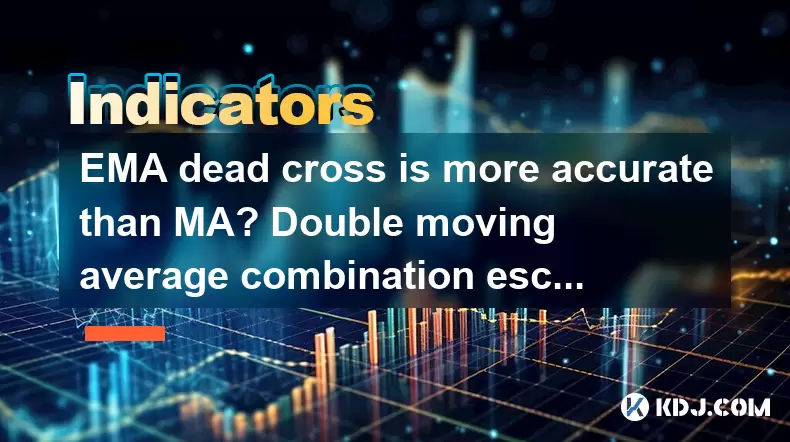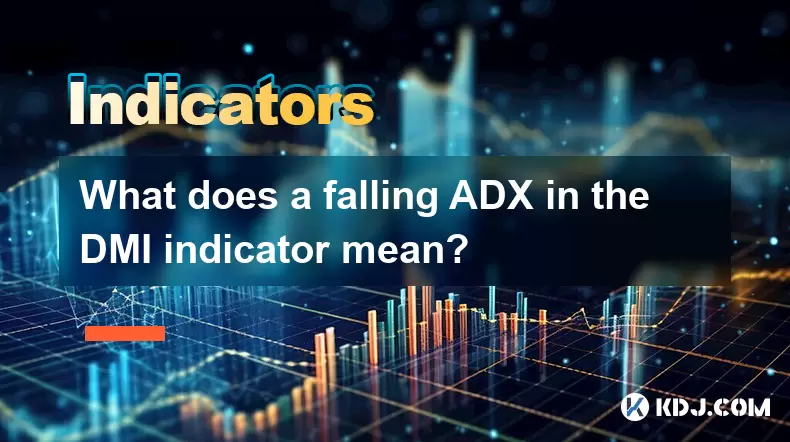-
 Bitcoin
Bitcoin $116700
0.24% -
 Ethereum
Ethereum $3973
4.34% -
 XRP
XRP $3.283
7.68% -
 Tether USDt
Tether USDt $1.000
0.01% -
 BNB
BNB $789.8
2.27% -
 Solana
Solana $176.2
3.31% -
 USDC
USDC $0.9999
0.00% -
 Dogecoin
Dogecoin $0.2238
5.14% -
 TRON
TRON $0.3389
-0.51% -
 Cardano
Cardano $0.7907
4.03% -
 Stellar
Stellar $0.4527
10.02% -
 Hyperliquid
Hyperliquid $41.07
4.27% -
 Sui
Sui $3.794
1.77% -
 Chainlink
Chainlink $19.49
10.40% -
 Bitcoin Cash
Bitcoin Cash $580.9
0.74% -
 Hedera
Hedera $0.2617
4.32% -
 Avalanche
Avalanche $23.41
3.67% -
 Ethena USDe
Ethena USDe $1.001
-0.03% -
 Litecoin
Litecoin $122.4
1.38% -
 Toncoin
Toncoin $3.364
1.49% -
 UNUS SED LEO
UNUS SED LEO $8.988
0.37% -
 Shiba Inu
Shiba Inu $0.00001295
2.82% -
 Uniswap
Uniswap $10.62
5.75% -
 Polkadot
Polkadot $3.922
4.46% -
 Dai
Dai $1.000
0.01% -
 Bitget Token
Bitget Token $4.494
2.15% -
 Monero
Monero $268.0
-1.30% -
 Cronos
Cronos $0.1523
3.68% -
 Pepe
Pepe $0.00001127
4.43% -
 Aave
Aave $285.4
4.85%
EMA dead cross is more accurate than MA? Double moving average combination escape top skills
EMA dead cross, using a 9-day and 26-day EMA, can help traders escape market tops in volatile crypto markets, but should be confirmed with RSI and MACD for reliability.
Jun 01, 2025 at 12:21 pm

The debate between the accuracy of the Exponential Moving Average (EMA) dead cross and the Simple Moving Average (MA) is a common topic among cryptocurrency traders. Both indicators are used to identify potential trend reversals, but they differ in how they calculate their values and their responsiveness to price changes. In this article, we will explore the differences between EMA and MA, analyze the accuracy of the EMA dead cross, and discuss strategies for using double moving average combinations to escape market tops.
Understanding EMA and MA
Simple Moving Average (MA) calculates the average price of a cryptocurrency over a specific period. For example, a 50-day MA takes the average closing price of the last 50 days. This method gives equal weight to all prices within the period, making it slower to react to recent price changes.
Exponential Moving Average (EMA), on the other hand, places more weight on recent prices. This makes the EMA more responsive to new information and quicker to signal potential trend changes. The calculation of EMA involves a smoothing factor that determines how much weight is given to the most recent price compared to older prices.
The EMA Dead Cross Explained
The EMA dead cross occurs when a shorter-term EMA crosses below a longer-term EMA. This is often interpreted as a bearish signal, suggesting that the short-term trend is turning downward and may indicate the start of a larger downtrend. For example, a common setup is to use a 9-day EMA and a 26-day EMA. When the 9-day EMA crosses below the 26-day EMA, it signals a dead cross.
Comparing Accuracy: EMA vs. MA
The accuracy of the EMA dead cross compared to the MA dead cross largely depends on the trading environment and the specific timeframes used. EMA's greater responsiveness to recent price changes can make it more effective in volatile markets where quick reactions are crucial. However, this same responsiveness can also lead to more false signals in less volatile conditions.
MA, being less sensitive to recent price fluctuations, may provide more reliable signals in stable markets. The choice between EMA and MA often comes down to the trader's strategy and the market conditions they are trading in.
Double Moving Average Combination for Escaping Market Tops
Using a double moving average combination can be an effective strategy for identifying and escaping market tops. This involves using two different moving averages, typically one short-term and one long-term, to generate trading signals.
Choose the Moving Averages: Select a short-term moving average (e.g., 9-day EMA) and a long-term moving average (e.g., 26-day EMA). These timeframes can be adjusted based on your trading style and the cryptocurrency's volatility.
Identify the Cross: Monitor the price chart for when the short-term moving average crosses below the long-term moving average. This is the dead cross signal indicating a potential market top.
Confirm the Signal: Before acting on the dead cross, confirm the signal with other indicators such as the Relative Strength Index (RSI) or the Moving Average Convergence Divergence (MACD). If these indicators also suggest a bearish trend, the signal is more reliable.
Execute the Trade: Once the dead cross is confirmed, consider selling your position or entering a short trade. Set stop-loss orders to manage risk, typically just above the recent high or at a level where the trend reversal might be invalidated.
Monitor and Adjust: Continuously monitor the market and adjust your strategy as needed. If the price continues to decline, you may want to hold onto your short position. If the price starts to recover, consider closing the trade to lock in profits.
Practical Example of Using EMA Dead Cross
Let's consider a practical example using Bitcoin (BTC) to illustrate how to use the EMA dead cross to escape a market top.
Set Up the Chart: Open your trading platform and add a 9-day EMA and a 26-day EMA to the Bitcoin price chart.
Monitor for the Cross: Watch for the 9-day EMA to cross below the 26-day EMA. This indicates a potential market top.
Confirm the Signal: Check the RSI and MACD for bearish signals. If the RSI is above 70 and starts to turn down, and the MACD line crosses below the signal line, the dead cross signal is more reliable.
Execute the Trade: Once the dead cross and confirmation signals are in place, sell your Bitcoin position or enter a short trade. Set a stop-loss order just above the recent high to manage risk.
Monitor and Adjust: Keep an eye on the market. If the price continues to fall, consider holding your short position. If the price starts to recover, close the trade to secure profits.
Additional Considerations
When using moving averages to trade cryptocurrencies, it's important to consider the following factors:
Volatility: Cryptocurrencies are known for their high volatility, which can lead to more frequent and potentially false signals. Adjust your moving average periods to suit the asset's volatility.
Timeframe: Different timeframes can produce different signals. Shorter timeframes may provide more signals but with lower reliability, while longer timeframes may provide fewer but more reliable signals.
Risk Management: Always use stop-loss orders and manage your position sizes to protect against unexpected market movements.
Frequently Asked Questions
Q: Can I use the EMA dead cross for all cryptocurrencies?
A: While the EMA dead cross can be used for most cryptocurrencies, the effectiveness may vary depending on the specific asset's volatility and market behavior. It's important to backtest the strategy on historical data for each cryptocurrency you intend to trade.
Q: How do I choose the best moving average periods for my strategy?
A: The choice of moving average periods depends on your trading style and the cryptocurrency's volatility. Shorter periods (e.g., 5-day and 10-day) are suitable for more active trading in volatile markets, while longer periods (e.g., 50-day and 200-day) are better for trend-following in less volatile markets. Experiment with different combinations and backtest them to find the best fit for your strategy.
Q: Is it necessary to use additional indicators to confirm the EMA dead cross signal?
A: Using additional indicators like RSI and MACD can help confirm the EMA dead cross signal and increase its reliability. These indicators provide different perspectives on market conditions and can help filter out false signals.
Q: Can the EMA dead cross be used for long-term investing?
A: The EMA dead cross is generally more suited for short-term to medium-term trading rather than long-term investing. For long-term investing, consider using longer-term moving averages and additional fundamental analysis to make informed decisions.
Disclaimer:info@kdj.com
The information provided is not trading advice. kdj.com does not assume any responsibility for any investments made based on the information provided in this article. Cryptocurrencies are highly volatile and it is highly recommended that you invest with caution after thorough research!
If you believe that the content used on this website infringes your copyright, please contact us immediately (info@kdj.com) and we will delete it promptly.
- Roman Storm, Funding Effort, and the Looming Defense Retrial: A New York Minute on the Tornado Cash Case
- 2025-08-09 02:50:14
- Crypto's Wild Ride: XRP, Dogecoin, and the Altcoin Surge You Can't Ignore
- 2025-08-09 02:50:14
- Elon Musk, Bitcoin, and the Enduring Power of Approval: A Crypto Love Story?
- 2025-08-09 03:50:15
- Ruvi AI: The Next Big Thing After Ripple on CoinMarketCap?
- 2025-08-09 03:50:15
- Floki Price Surges: Elliott Wave and Fibonacci Setups Point to Potential Gains!
- 2025-08-09 02:30:16
- Pepe Price, RTX (Remittix?) & the $10K ETH Dream: NYC Crypto Chatter
- 2025-08-09 02:30:16
Related knowledge

What does it mean when the TRIX indicator suddenly diverges downward after a long period of convergence?
Aug 09,2025 at 12:56am
Understanding the TRIX Indicator in Cryptocurrency TradingThe TRIX indicator, or Triple Exponential Average, is a momentum oscillator used in technica...

Why is the rise limited after a MACD bottoming divergence?
Aug 09,2025 at 12:07am
Understanding MACD Bottoming Divergence in Cryptocurrency TradingThe MACD (Moving Average Convergence Divergence) is a widely used technical indicator...

What does it mean when the OBV continues to rise but the price is trading sideways?
Aug 08,2025 at 10:35pm
Understanding On-Balance Volume (OBV)On-Balance Volume (OBV) is a technical indicator that uses volume flow to predict changes in stock or cryptocurre...

What does a falling ADX in the DMI indicator mean?
Aug 09,2025 at 03:16am
Understanding the ADX and DMI Indicator FrameworkThe DMI (Directional Movement Index) is a technical analysis tool developed by J. Welles Wilder to id...

What does a double top pattern on the Williams oscillator mean?
Aug 09,2025 at 02:36am
Understanding the Williams %R OscillatorThe Williams %R oscillator is a momentum indicator developed by Larry Williams to identify overbought and over...

What is a nonce and how is it used in Proof of Work?
Aug 04,2025 at 11:50pm
Understanding the Concept of a Nonce in CryptographyA nonce is a number used only once in cryptographic communication. The term 'nonce' is derived fro...

What does it mean when the TRIX indicator suddenly diverges downward after a long period of convergence?
Aug 09,2025 at 12:56am
Understanding the TRIX Indicator in Cryptocurrency TradingThe TRIX indicator, or Triple Exponential Average, is a momentum oscillator used in technica...

Why is the rise limited after a MACD bottoming divergence?
Aug 09,2025 at 12:07am
Understanding MACD Bottoming Divergence in Cryptocurrency TradingThe MACD (Moving Average Convergence Divergence) is a widely used technical indicator...

What does it mean when the OBV continues to rise but the price is trading sideways?
Aug 08,2025 at 10:35pm
Understanding On-Balance Volume (OBV)On-Balance Volume (OBV) is a technical indicator that uses volume flow to predict changes in stock or cryptocurre...

What does a falling ADX in the DMI indicator mean?
Aug 09,2025 at 03:16am
Understanding the ADX and DMI Indicator FrameworkThe DMI (Directional Movement Index) is a technical analysis tool developed by J. Welles Wilder to id...

What does a double top pattern on the Williams oscillator mean?
Aug 09,2025 at 02:36am
Understanding the Williams %R OscillatorThe Williams %R oscillator is a momentum indicator developed by Larry Williams to identify overbought and over...

What is a nonce and how is it used in Proof of Work?
Aug 04,2025 at 11:50pm
Understanding the Concept of a Nonce in CryptographyA nonce is a number used only once in cryptographic communication. The term 'nonce' is derived fro...
See all articles

























































































